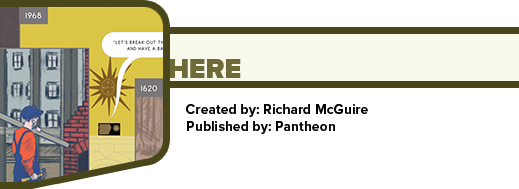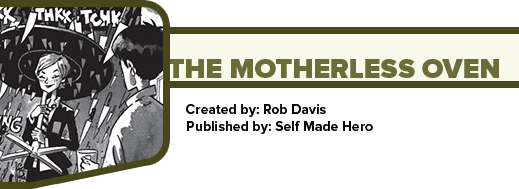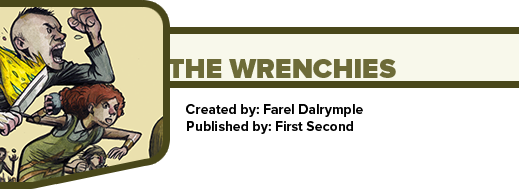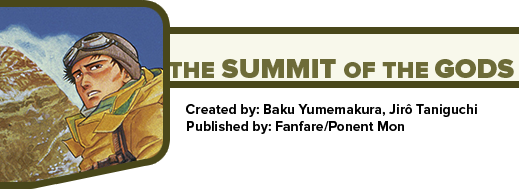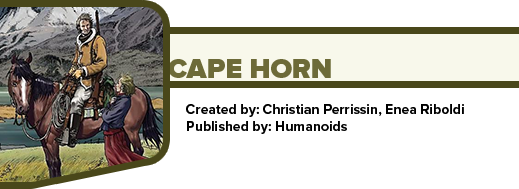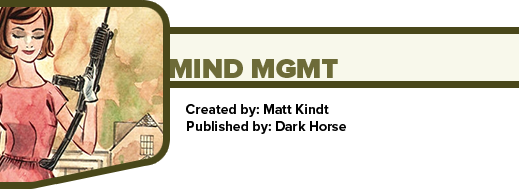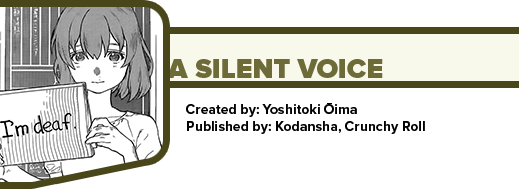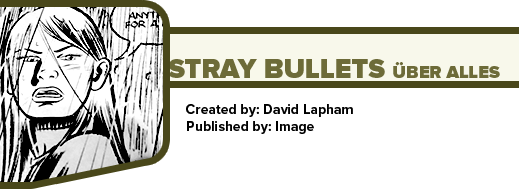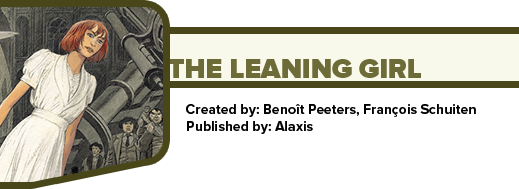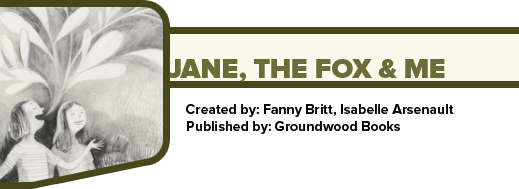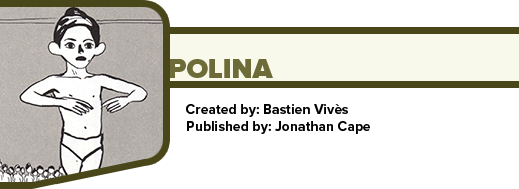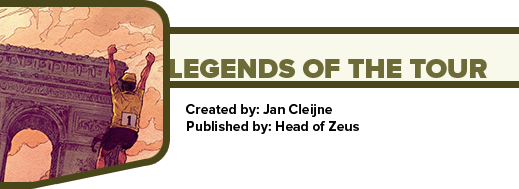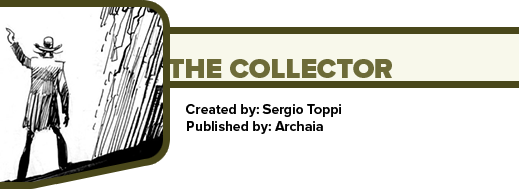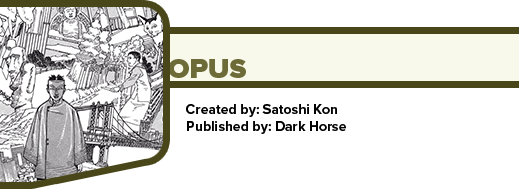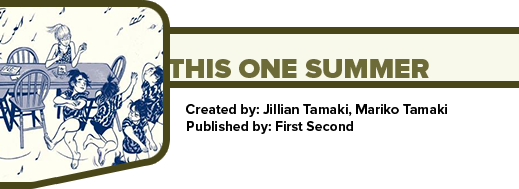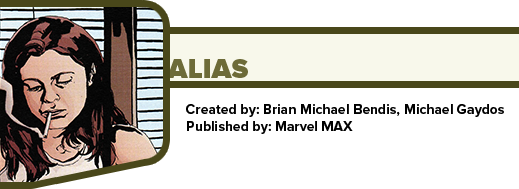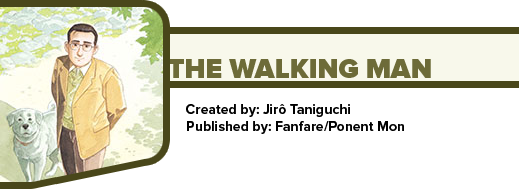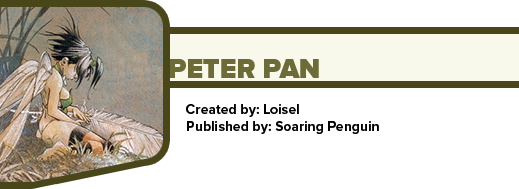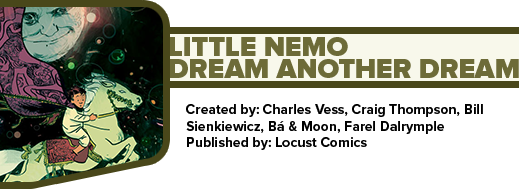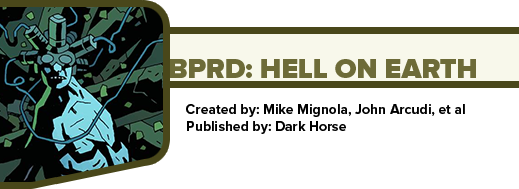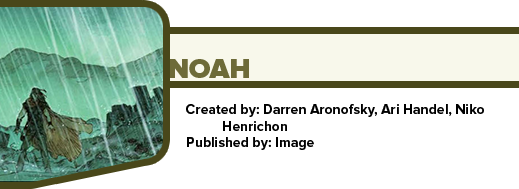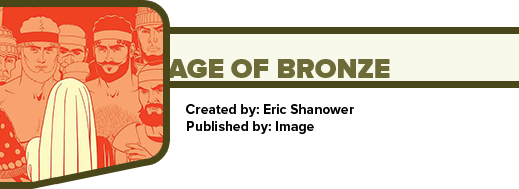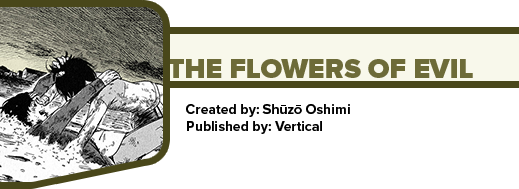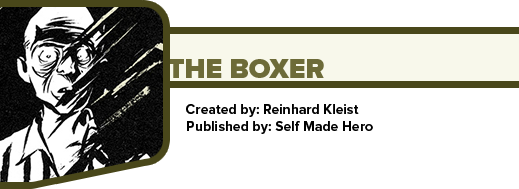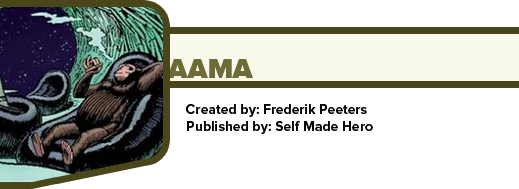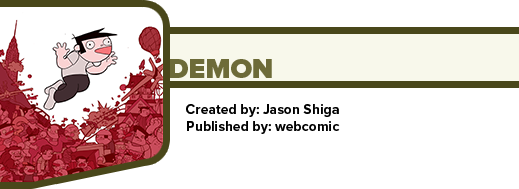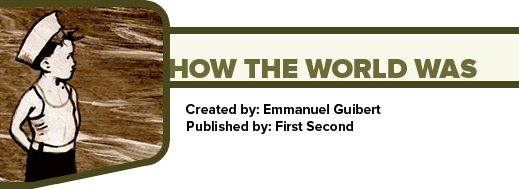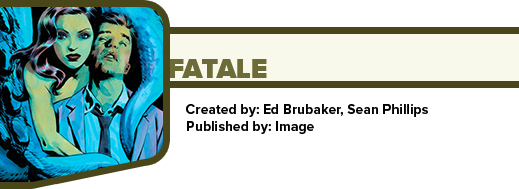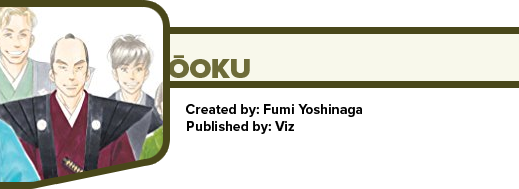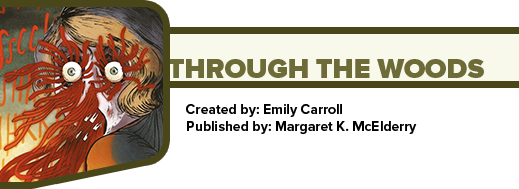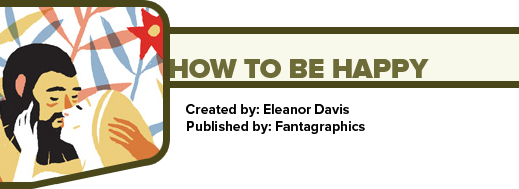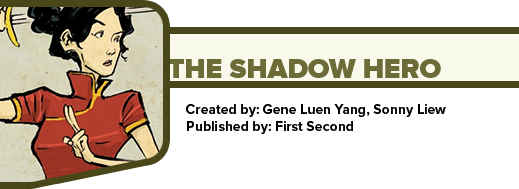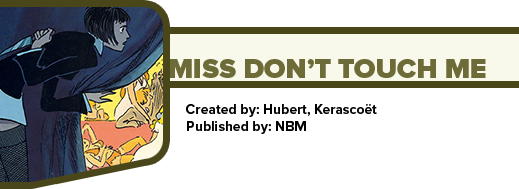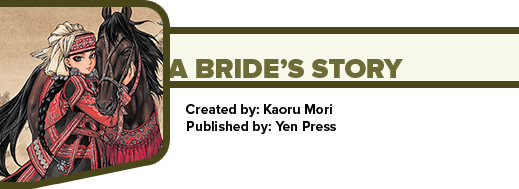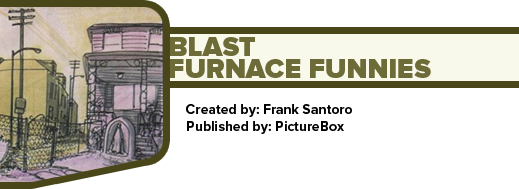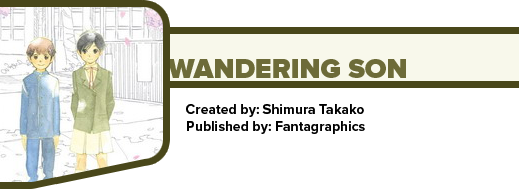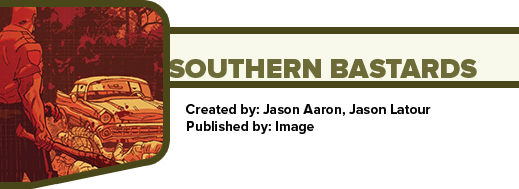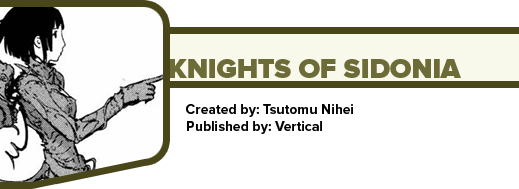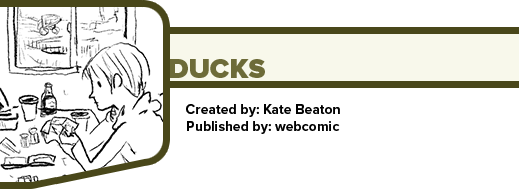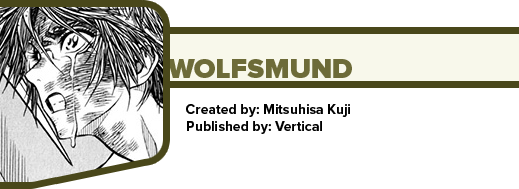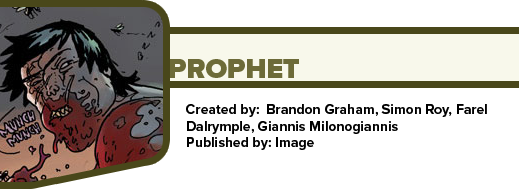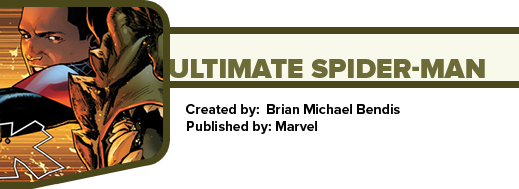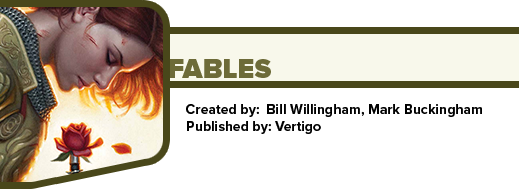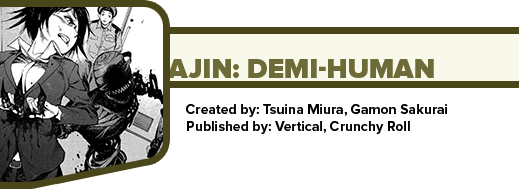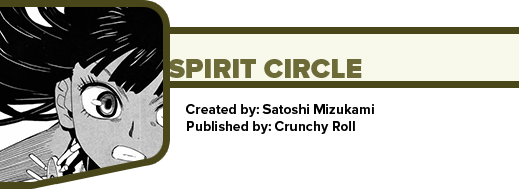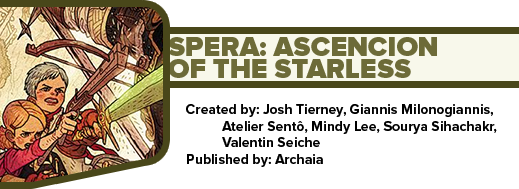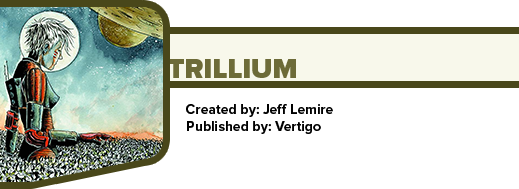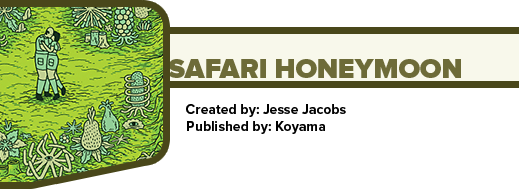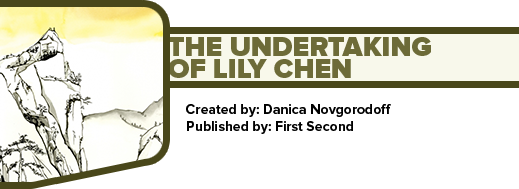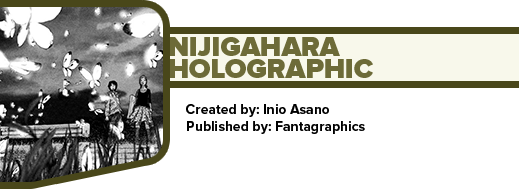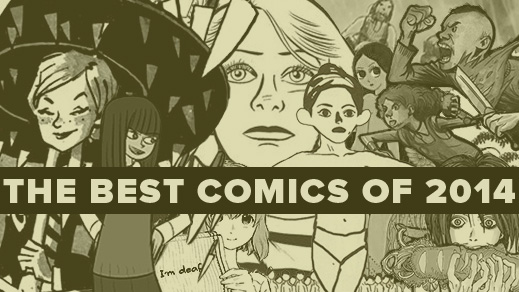

Welcome to my annual attempt to share what I felt were the best comics of the previous year (in this case, the books of 2014). Of course all the usual obnoxious caveats apply: a) that these lists are always only going to be a highly subjective record of tastes of a particular moment in a given segment of time; b) that it's virtually impossible and actually impossible to retain the same memory of a work read in January as it is of one read in November; c) that I of course haven't read a great many of the potentially fantastic works from across the year. All that's the same-ol' same-ol'. There is, however, a slight change to the proceedings.
I'm increasingly having trouble figuring out what to count for these things, so far as the year goes. I read Loisel's Peter Pan and Collins' Gigantic Beard That Was Evil in 2013 (because I bought them from the UK), but they both got US distribution in 2014. So which year do I count them for? I included them in 2013's list but I'm going to include them again this year because this is when most of my readers will have the opportunity to buy them. And what about big rereleases of old content? Bendis' Alias omnibus is available again. Taniguchi's The Walking Man too. It seems a shame to ignore them but weird to include them. Like, what if my #1 book for 2014 was a book from 2003? Anyway, here's the lowdown.
I'll be including:
- Comics printed as single issues in 2014
- Comics printed in collected form for the first time in 2014
- Comics printed as books for the first time in 2014
- Comics printed as books for the first time in the US in 2014
- Comics published on the web in 2014
- Comics published through digital subscription services like Crunchyroll in 2014
- Important comics reissued for the first time in many years
- Comics printed in late 2013 that I didn't see until 2014 (i.e. books that weren't released in time to reasonably have been included in my 2013 list)
I believe that covers all my bases. Really though, I'm less interested in being a stickler for details than I am in just flat out recommending you some great comics reading from over the last year. So let's do that.
My Best 75 Comics of 2014
1–1011–2021–3031–4041–5051–6061–75
2014 was a strong year for comics in one sense. I had a very hard time narrowing the Top 10 of my list this year simply because I desperately wanted to squeeze fifteen or twenty books into that Top 10 space. In another sense, however, 2014 was a little bit wanting.
It wasn't until January of 2015 that I found a book that actually would count as a Great-And-For-The-Ages kind of work. 2009 had Asterios Polyp. 2010 had Duncan the Wonder Dog. 2011 had Daytripper, Habibi, and Big Questions. 2012 had Building Stories and The Nao of Brown. 2013 was a little limp as well, but there was still Children of the Sea. This last year though: a ton of great books but nothing that really looked like a game-changer to me. Until I read Here.
While McGuire explored all the baseline medium-expanding visual tricks used in Here back in 1989 in RAW, I had never seen those six pages before. Probably not a lot of other people had either. Which kind of adds up to why I've never seen this sort of long-view exploration of place—of locus—in any other work.
Here, in a lot of ways, features the kind of location-narrative that I assumed Building Stories would have capitalized on (it actually only did so in one of its thirteen "books"). McGuire's camera never moves through any dimension other than the fourth. He shoots backward and forward through time, sometimes by moments and sometimes by billions of years. But he never ever moves left or right, or up or down, or forward or backward.
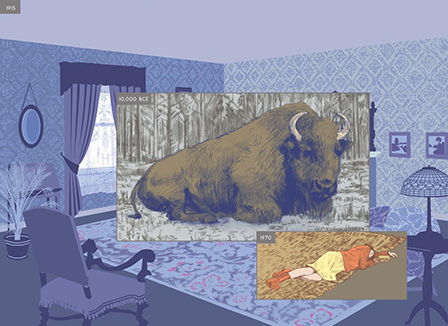

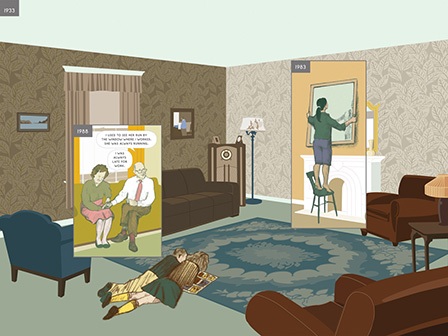
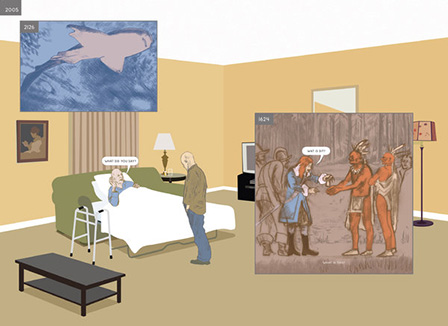
It's a jaw-dropping technique and I'm glad he revisited it in a longer, broader form. In the original, the panels were cramped, colourless, textureless, and largely lifeless. This new exploration of concept is vibrant and speaks to the reader's soul, emphasizing both the temporary nature of the individual as well as their immediacy.
Motherless Oven is one of those wild, bursting-with-imagination stories. Davis crafts a world that we'll never be able to expect or entirely grok the rules for. It's funny and turbulent and only ever hints at what it is itself all about. And I liked it for that. It's a world where children, whose origins remain veiled, build and maintain their own parents, know the day of their deaths, and can change the season with an ill-advised flick of a switch. Here's a slapdash visual taste of some of what is encountered.
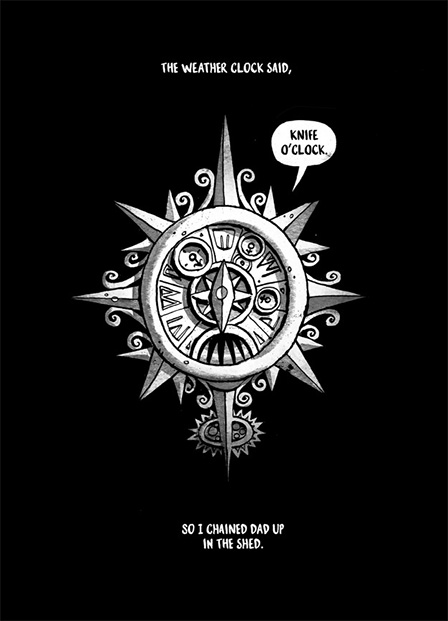
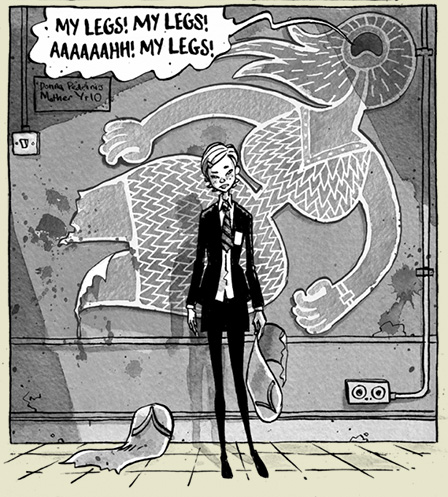
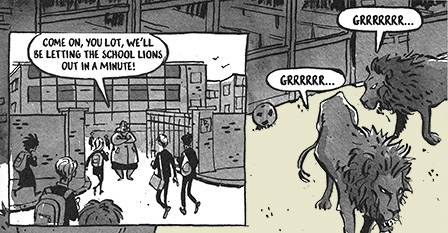
With The Wrenchies, I feel I've top-loaded my 2014 list with the bizarre. Which isn't to say that there won't be tastes here and there later, but for Motherless Oven and The Wrenchies to secure Top 3 status and have a severely non-traditional narrative like Here take the number one spot, it almost feels like I'm not really into mundane stories at all. (Fortunately, my #4 is about as traditional as you can possibly get. Nothing post-modern about it!)

But really, while both Motherless Oven and The Wrenchies fill their backgrounds with ludicrous and creative imaginations, the actual story and structure are pretty soldily within the realm of not-rocking-the-narrative-boat. They each feature goal-oriented protagonists with a pretty straightforward goal in mind. Not a lot of twists and turns and paradigm-shifting hoo hah.
Yumemakura and Taniguchi wrapped up their final volume of the series some time ago, but Taniguchi's work only trickles into English translation and distribution (I believe vol 5 of Summit lands in the US in March 2015). He's one of the treasures of the medium, and the majesty of his work on Summit of the Gods cannot be underestimated.
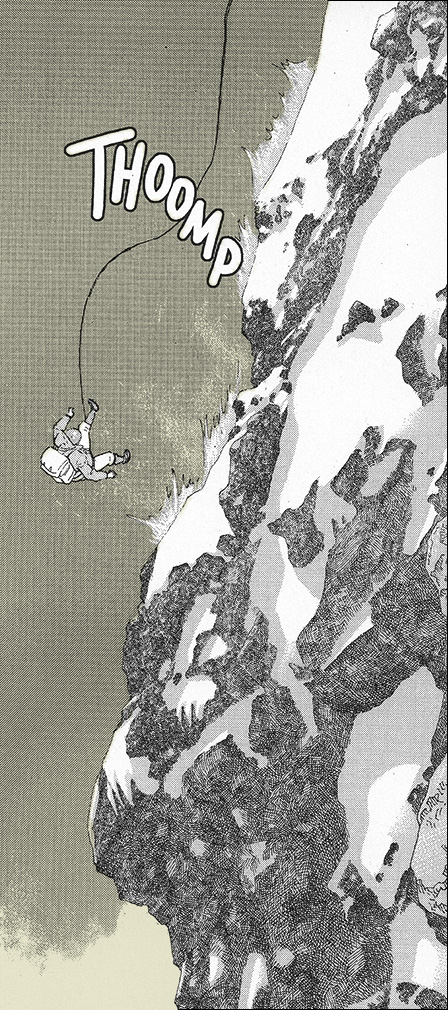
I have essentially no interest in mountaineering and largely view Everest climbs as the province of fools, but Summit is among the most thrilling, grand, and empathetic examinations of the culture one could ever hope to read. So much of the time reading these five volumes I was on tenterhooks. I highly highly highly recommend throwing yourself into the magic of what these two creators have brought together here.
Cape Horn is kind of like Manara's "Indian Summer" minus the probably misogynistic treatment of women by the artist and the rampantly cliched vision of preachers and Native Americans and their activities and predilections. The art is as luscious as Manara's, but it's got story and sense to propel it. There's nothing in Cape Horn to push the astute mature reader to reevaluate history or our place in it (the story functions mostly as grand adventure), but it's so well done that one almost can't help but marvel in admiration. A wholly lovely endeavor.

Matt Kindt continues to produce the most bafflingly smart series on the market. The twists and turns come furiously and often. Honestly, at this middlepoint in the series, there's not a lot to say but that he never disappoints and I can't wait to see how he wraps this up.
Several years ago I ran into a stand-alone story by Ōima called "A Silent Voice" about a deaf girl new to an elementary school and the mischievous boy who instigates a prolonged war of bullying against her. It was a sweet, tragic story of redemption and comeuppance. I loved it. Last year, Crunchyroll began releasing the series Ōima adapted as an expansion of that story. I was excited but worried that she would over-extend and pad the story and suck all of its charms away. I needn't have worried. Ōima proved herself perfectly able to extend her vision for the story and created one of my favourite manga stories ever.
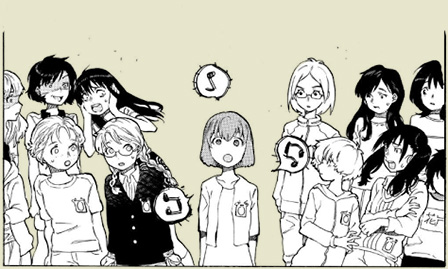
A Silent Voice explores themes of identity, belonging, alienation, disassociation, suicide, bullying, self-confidence, anguish, forgiveness, friendship, and deafness. It is a thoroughly winning and charming book and Ōima's art is fluid and self-assured. She has a deep talent for illustration. The book will begin to see English print publication in 2015 by Kodansha and I'll be picking those up as well.
Moyocco Anno's In Clothes Called Fat intimately concerns a world maintained and partly governed by the sexual objectification of women and reads as a good companion to Kyoko Okazaki's Helter Skelter (a top pick from 2013). The book revolves wholly around how the principal identity of a woman is founded in her attractiveness. Every new chapter (save for the finale) is abstractly heralded by the depiction of a lean, beautiful, and often nude woman—who is not (until the last chapter) the protagonist. The entire ecosystem of Anno's story is populated by an ethos and ethic developed around the desirability of women.

In Clothes Called Fat does that thing the best books do. It prompts renewed thoughtfulness about the world, the nature of civilization, and our place in both. We shouldn't expect that Moyocco Anno will change the world with this small graphic novel, but we might as well hope. And at the least we can allow ourselves to be affected and renovated.
With the release of the Uber Alles edition of Stray Bullets (collecting the entire original series in one volume), David Lapham makes the classic available for the first time to a host of readers. Even readers who followed the series as it originally came out. I loved the book in its original run (it was among those handful of books that brought me back into comics after several years of abstinence) and looked forward to new issues. But eventually, it all dried up and I no longer saw volumes appearing in my local store. This was before Twitter made contact with the actual creators a simple challenge. When a book disappeared, most readers just felt they were at the mercy of fate. With no line of contact to creators and publishers, there really wasn't a great way to discover what had become of a favourite book. I remained for far too long unaware that Marvel had actually printed a conclusion to their gorgeous Akira adaptation. Likewise, I wasn't aware that Stray Bullets had ever made it past issue #32.
It eventually reached a 40th issue, which is still set eleven years before the start of the book, and hung there mid-arc for over a decade.
This year, in anticipation of a new series, Stray Bullets: Killers, Lapham rereleased an omnibus edition of the earlier series, including a climax to the previously unfinished arc. I was finally able to get some satisfaction with this arc of Virginia Applejack's story (Virginia is the main reason to mainline Stray Bullets). Stray Bullets is brutal and mad and lovely and perfect. I'm so glad that I was able to finally encounter this conclusion to Act I. And excited that others can finally experience for themselves the best of comics crime stories.
Awhile back I had seen a Kickstarter for bringing Peeters and Schuiten's Obscure Cities volumes into English publication, beginning with their Leaning Girl. I'd not previously heard of the creators, but the pages displayed on the Kickstarter were stunning. And of course I promptly forgot about the project. Some time later (enough for the book to have successfully been kickstarted, to go to print, and to have hit general circulation), I was reminded of its existence through Twitter and promptly picked it up.
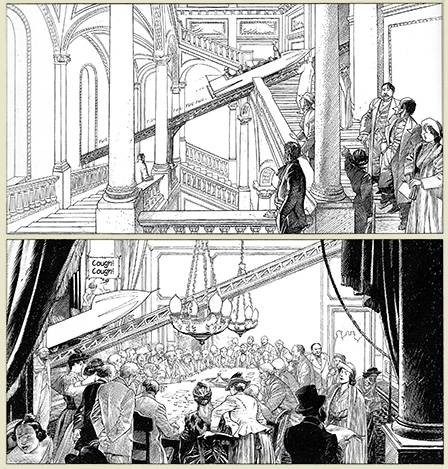
The illustrations are gorgeous and would be worth the price of admission all on their own. Schuiten is a virtuoso illustrator and has an eye for fine detail that puts him in similar orbit with Otomo and Taniguchi. Just lovely, expansive work. But beyond merely being a work of art, The Leaning Girl explores narrative trickery with a buoyant kind of liveliness that should be endearing to most readers. At first we don't know exactly what's going on with the accompanying photo-narrative, but gradually it all begins to coalesce and we're rewarded with something lovely and obsessive, something about the transcendence of human contact.
I wasn't sure about Beauty for perhaps its first half. It felt very much as if it were intending to be just a cliched cruel faery tale, a moral lesson about being careful of what one wishes for. (And I suppose that's there to some extent.) But after everything goes rotten and continues to go rotten and new rotten things are introduced, somewhere in all that the tenor begins to change and life forces begin to assert themselves and beauty becomes a thing much better than it might have been.
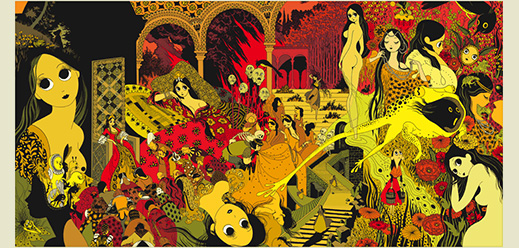
This made my list last year because I went ahead and ordered it imported, not knowing when Jonathan Cape would release it to the US. I'm glad I didn't wait because the book is immaculately produced, a work of design and intelligence with a teleology all its own. I'm happy that The Gigantic Beard that Was Evil picked up US release this last year because it gives me another opportunity to prompt you to read it. Every month that you pass on it and read some Batman or Power Pack or whatever you crazy kids are into these days is a month in which you have done yourselves a disservice.
I'm still not exactly sure of the place and import of the titular Fox, but this was a surprisingly lovely story. I guess that technically it came out in 2013, but I'm including it here because December 2014 was the first I'd even heard of the book (I don't remember it on any best-of lists from 2013).
It's about a girl who is concerned about her weight and feels the brunt of social antagonism at her school (even though just a year prior she was friends with all the popular girls). She also likes reading and over the course of the story moves through the text of Jane Eyre. It's sweet without succumbing to that overly treacle sentimentalism that costs too many books their laurels. And it's beautifully illustrated.
I was making plans to write a graphic novel about the life of a ballet dancer when I heard of Polina. I was able to secure a copy from the UK in January of 2014 and about half my dreams for my book collapsed. Vivès has made something lithe and beautiful and frustrating and perfect. I recommend it to you.
I'm not into spectating sports. I never have been. I don't care to watch others physically excel. Once upon a time, before age and injury and surgeries and the frailty of the race overtook me, I did like to participate in athletic endeavors myself. But I could never sit back and enjoy the hard work and skill of others. And even when I was athletic and fast and well-balanced, I still didn't ever care for racing bicycles.
So when I approached Legends of the Tour, a book telling stories from the history of the Tour de France, with some admixture of apathy and antipathy, it should underscore just how good the book is when I say that it absolutely enchanted me. I couldn't put the book down. It has no central character apart from perhaps the race itself, and yet it is a gripping experience of these dudes' weird love for riding bikes really fast for a long time. Up and down mountains. In terrible weather. Through the night. At cost to their health and sometimes their lives.
And it's beautifully illustrated.
I knew Kerascoët from Miss Don't Touch Me and was excited to see another of his works arrive in the US. And Beautiful Darkness is one of those mind-blowing books that demands interpretation. It's raucous and sinister and madcap and ferocious. And beautiful.
I was glad to see a new volume of Toppi from Archaia. Previously, they'd released a translation of Sharaz-De (and it's gorgeous), and I'd been curious if it would do well enough for them to consider a second work. The Collector is just as beautiful and a bit more globe-trotting. And while the chapters are still fairly discrete in nature, they do follow a single man (the Collector) around on his adventures in the nearly post-colonial world. The story is fine (and better than in Sharaz-De) but still nothing spectacular. The reason to pick up Toppi (and the reason Archaia provides the book in its lush oversized print edition) is for the art. He is, quite frankly, amazing and like nothing I've seen.
I didn't know that Satoshi Kon's Opus was an incomplete work when I bought it. All I knew is that another of Kon's comics had arrived finally in the US. (Kon, for the unaware, is my favourite animated director—inexplicably beating out even Hayao Miyazaki, whom I rightly revere. Before Kon directed animated features, he did comics, sometimes with Otomo.) But I didn't know it was never finished.
Now you do. Now you know what I didn't. And now you also know that it doesn't matter. Because I'm telling you: it doesn't matter. Opus is great and inventive and wonderful. And its lack of a real ending but inclusion of a posthumously-discovered proposal for an ending (Kon died too too young in 2009) may actually elevate the work in certain ways that couldn't have been otherwise accomplished. Check it out.
Two Tamaki cousins working together craft one of the best odes to nostalgic glow I've ever had the pleasure to bask in. My wife liked this book and thought it was really good, but I loved it. It hit all my sentiment feelers without ever straying into sentimentality. The protagonists are girls, probably around the age of twelve, and I saw myself in them. In their dreams, in their hopes, in their carelessness, in their selfishness, in their inability to be what they are going to be and in their inability to escape what they're going to be.
Plus, Jillian Tamaki's illustrations are just lush.
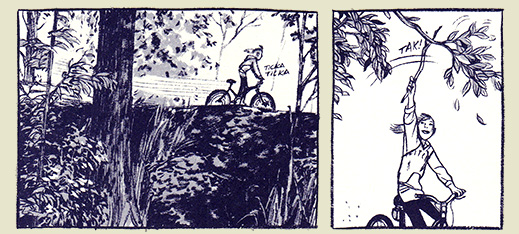
Brian Michael Bendis joined the Marvel team on the strength of his work on Powers (so far as I'm aware). He had his earlier crime books (Goldfish, Jinx, and Torso) and an espionage one (Fire), but those were all just water-testing. Powers showed he had something special and could do superheroes from a unique vantage. So Marvel brought him on and that earliest work was his best. Pretty easily his best. And while Daredevil was rather stunning and Ultimate Spider-Man did the impossible and made Spider-Man fun to read again, his signature work is Alias, which unconveniently overlapped with the era in which JJ Abrams also was running a female-led series called Alias.
Alias was great. I bought it all in singles. Then in trades. Then in the big-old hardcover omnibus edition they released a few years later. I've wanted to review Alias for ages but always felt it was a waste of time. After all, the series had long been out of print. No point in saying, Omigosh you have to read this series that you'll never be able to buy! But now it's back. In single-volume hardcover omnibus edition. When asked, Bendis told me it's the same edition I got a while back only with probably slightly better paper. Which is great because I have absolutely no complaints about the paper in the original omnibus.
The Walking Man is one of those treasures of the medium that was available for far too brief a time. Taniguchi's meditative exploration of the tie between scenery and soul hit like a rocket, and its small print run quickly evaporated. I ran into the book quite by accident one day in my local store. They'd happily pick up the occasional international release and I just happened to see it the day it came in. I was unfamiliar with Taniguchi but was taken by a beautifully illustrated book featuring very few words. I didn't realize my good fortune until a few months later when I unsuccessfully tried to procure a copy for my father's birthday. But now, more than ten years later, Fanfare/Ponent Mon has decided to make it again available in a sturdy hardcover. Please don't miss this opportunity a second time. (My dad now at last has his own copy.)
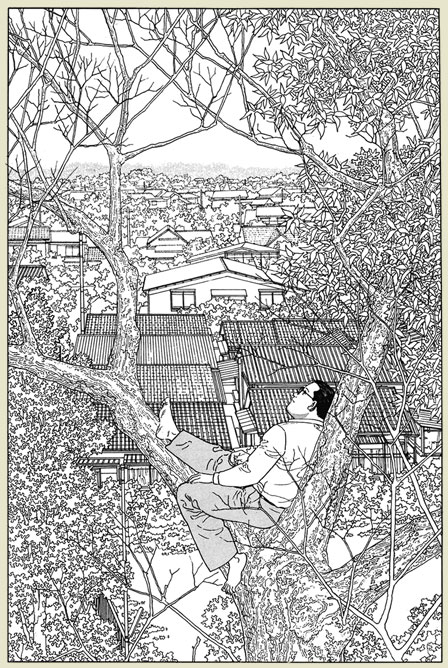
This one made my Best Of list last year. I'm only including it here because 2014 was the year it became available in the US—and man, it would be a shame if some of you didn't take the opportunity to check it out simply because its cross-year publication schedule prevented it from cropping up in an end-of-year list.
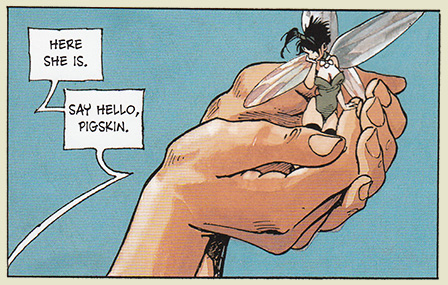
1) It's a beautiful book with wonderful illustrations. 2) It's faithful to Barrie's Peter & Wendy in a way that feels positively adulterous. 3) It's faithful to Barrie's original in a way that feels entirely reverent and honouring. 4) It's complex and interesting and winding and leaves plenty of room for mature book clubs to discuss intent and practice and interpretation.
Bad Machinery does not stop being the best webcomic I've ever had the pleasure of reading. Except for the fact that John Allison decided to end the mystery adventures of our lovely little teens and turn his lens to other characters in town, recasting the series as Bobbins in late 2014. Not that this stops Oni from continuing to release collections of Bad Machinery's old case files. This is humour and high school pathos done right: whip-smart and loving you as if you were as handsome as you wish you were.

Winsor McCay is one of the demigods of the medium, both patriarch and virtuoso exemplar. His original Little Nemo in Slumberland comics were forged of possibly the greatest sense of whimsy and wonder comics has ever seen. He was not properly appreciated in his time (we know this because he was never crowned president of the American nation).
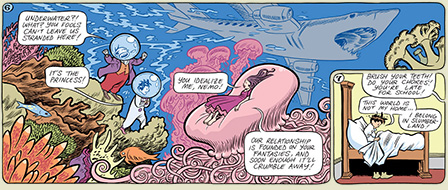
Now, a century later, a few fans with means and vision set forth a project via Kickstarter. A new book. A series of broadsheet homages to McCay and Nemo. It's a lovely, impressive work, featuring artists luxuriating in and sometimes wrestling with (in the case of the off-colour Imp character) McCay's legacy. Of course, as anthology, the quality of the efforts is variable, but at its best Dream Another Dream is Top 5 material. (I did get the feeling, though, that a handful of creators on the project had been introduced to Nemo in conjunction with the message asking whether they'd want to play a part in the compilation.)
A couple years back when Guy Davis was on the book, BPRD was among the hottest series out there, if not in a sales sense then definitely in a Holy-Cats-This-Is-The-Most-Amazing-Stuff-You-Guys sense. Then Mignola and Arcudi brought everything to cataclysm and rebaptised the book BPRD: Hell on Earth. And it was good. Not stellar but not in any sense bad. Davis left the book to pursue other dreams and a handful of artists took on the illustrative chores. It was still BPRD and it still had tons of great things going on, but it felt (to me at least) a bit rudderless. That's largely been righted in the last year, and reading the most recently released volume brought back a touch of that grand excitement. Things have been so bad for so long for the Department that it's been a pleasure to see them take the fight forward a bit with the rise of Conan-esque Howards and the return of Liz Sherman.
INJ Culbard is one of the most competent illustrators around. His style veers toward simple (a notch more detail in his faces than Stuart Immonen circa Nextwave and Moving Pictures) but he is so expressive that the simplicity suits his work and brand of dynamism. American readers would probably be largely unfamiliar with him if they hadn't caught his adaptations of Doyle (Holmes), Burroughs (Martian Chronicles), and Lovecraft (Cthulhu mythos).
With Celeste, Culbard proposes an alternative to the kind of disposable stories that so much of the medium seems to be swamped in, books that can be plowed through without a single thought toward interpretation, toward meaning, toward purpose and end. Celeste is elegant and bizarre and doesn't forthrightly open itself to the reader. It begs to be mulled. Which makes the coincidence of its lovely illustrations a special treat.
Man, I avoided reading this for long enough. Huge fan of Aronofsky. Huge fan of an interesting exploration of the Hebrew mythos (actually a fan of crafty explorations of any ancient mythos). Completely nervous that this would suck so so bad. Bible stories are almost exclusively adapted into boring epics or into paint-by-numbers sterility. Nobody interacts with character motivation in responsible, believable ways.
What finally tipped the scale for me was seeing some screens of Nico Henderson's art for the book. I was pretty wowed. I don't know if any of you had the "pleasure" of seeing some of the Bible comics that proliferated in the early '90s. I did. They were brutal. I've even seen some pages from comics Bibles released in the last decade and some contemporary attempts to create religious comics. It's all bad news. Aronofsky's Noah, though? This thing was beautiful. And nuanced. And complicated. And wild.
I'm half interested in seeing the film version now. I mean, I probably won't because who has the time. But I'm at least interested.
Also, I don't have any great shots but I did Instagram this series while reading. It's basically canon.
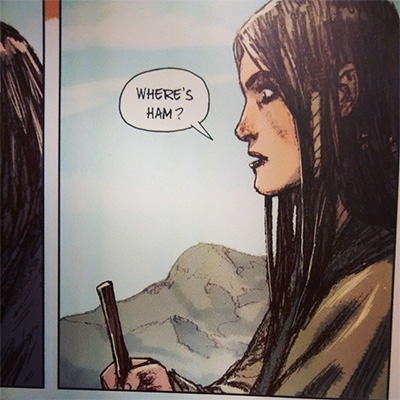 The boys have a lot of explaining to do—why they couldn't secure a good meal for Xmas, why the family will go hungry this year. #missusNoah
The boys have a lot of explaining to do—why they couldn't secure a good meal for Xmas, why the family will go hungry this year. #missusNoah
 Panic asserts itself. This is what happens when you don't plan for the holidays.
Panic asserts itself. This is what happens when you don't plan for the holidays.
 Desperation grows. We must save Christmas dinner!
Desperation grows. We must save Christmas dinner!
While its incremental rate of release can be maddening and alienate waiting readers, the work produced remains a colossal achievement. Volume 3, part 2 featured both the beginning of the Trojan War proper and the tale of Troilus and Cressida. I had been wondering which direction Shanower would take on the matter of Cressida's fidelity, and the author proved worthy the task. This was perhaps the most exciting volume yet and of the big monster multi-volume projects out there (Game of Thrones, Lutes' Berlin, and Hines' Duncan the Wonder Dog), Age of Bronze is the one I least expect to reach completion (well, maybe tied with Berlin). No matter how much I wish to see it collected.
The last couple years of following Oshimi's wild trail have been envigourating. Flowers of Evil takes a couple fascinating turns and keeps readers on their toes wondering what will happen next. And while early on I was uncertain of how much I would enjoy the book, in the end it was just a really cool exploration of growing up. If it weren't for the unwieldy length at eleven volumes, I'd suggest that Flowers of Evil would make the perfect book club book, as it's ripe for discussion.
Reinhard Kleist's art is fluid, organic, and pretty wonderful. He captures Haft so so well at all kinds of ages and in all kinds of conditions. Young teen, twenty-year-old boxer, fifty-year old man, Holocaust-starved teen, distraught, angry, deliriously happy. Under Kleist's brush Haft always looks like Haft—even when he's almost entirely another person. Whether past, present, or future, whichever Haft Harry chooses to be in a moment, Kleist makes certain the soul remains bubbling and fighting below the surface, unquenched. It's a fantastic exercise and Kleist delivers both a Holocaust narrative that has something new to say and a personal history that succeeds in making its hero intriguing without lionizing him.
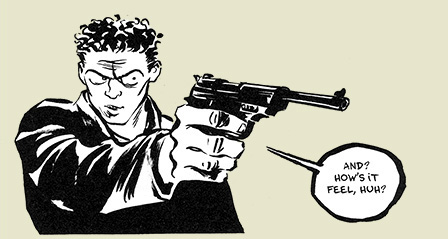
Luke Pearson continues to forge new ways for Hilda to interact with the world of faeries and trolls and magic and wonder that encircles (and now, we find, dwells within) her new city-home of Tralberg. It's good stuff.
Frederik Peeters is one of my favourite producing creators. I was wowed by Sandcastle last year, then picked up the awesome, surreal Pachyderme, and then grabbed the first volume of Aama in the Autumn. Glyn Dillon turned me on to Peeters. Think about that a minute. You've seen Dillon's artwork. You've read The Nao of Brown. Of course you have. And now think about what it means when Glyn Dillon says, Man, you should really be checking out Frederik Peeters. It means things. Important things. And I'll reiterate in case you missed it. You should really be checking out Frederik Peeters.
Okay, so one of the comics I most hated in the last five years was Jason Shiga's Empire State. I hated it so much that when I heard Shiga had a new comic coming out that everyone was crazy for, I simply said, "Nope. Not my thing." After all, people loved Empire State as well. And so I didn't. I didn't read Demon for a long time. But then, in preparing this list, I felt a certain responsibility to give things shots that I would have previously passed up. Due diligence, it's called. And man, I read a lot of stuff that people loved or recommended that just won't be seen anywhere on here. But Demon? This stuff's gold.
Shiga riffs on my favourite Denzel Washington movie, Fallen, and proposes the story of a man who discovers that he's a demon who will possess the closest living creature upon the death of his current host. It's smart and clever and wily. Shiga's art is the perfect match for his story and I cannot wait to see where all he takes this. I cannot wait to own a copy when this thing inevitably sees print.
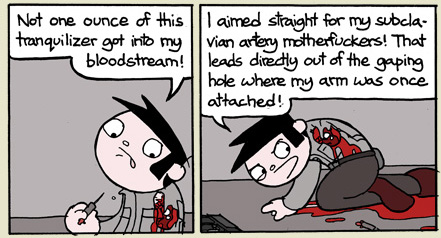
Also, I may be wrong, but I think the main character from Demon is the main character from Empire State, which almost entirely redeems the earlier book for me.
A woman in advertising who wonders if she should be in advertising lives her life, browses dating profiles, and suffers the kind of lack of extroversion that lets friends score with guys she's eyeing. She's an average Joe living an unremarkable life but for her one exertion of power: she shoplifts an almost inconsequential item from the local convenience store whenever she stops in. It gives her verve and spark and life. She thinks. This is a week or two of her story and it is told with excellent precision and with gorgeous illustration technique.
A few years back, Guilbert released a book, Alan's War, culled from a series of interviews with ex-pat Alan Cope and chiefly concerning his time as a G.I. in WWII and after. How the World War amounts to supplementary material, an extended (and wholly worthwhile) series of appendices to the prior work. In it, Guilbert portraits (chiefly) life in California during the Great Depression. Kids in California schools should probably have this on the California history reading lists. Such a grand perspective on an era a century behind us.
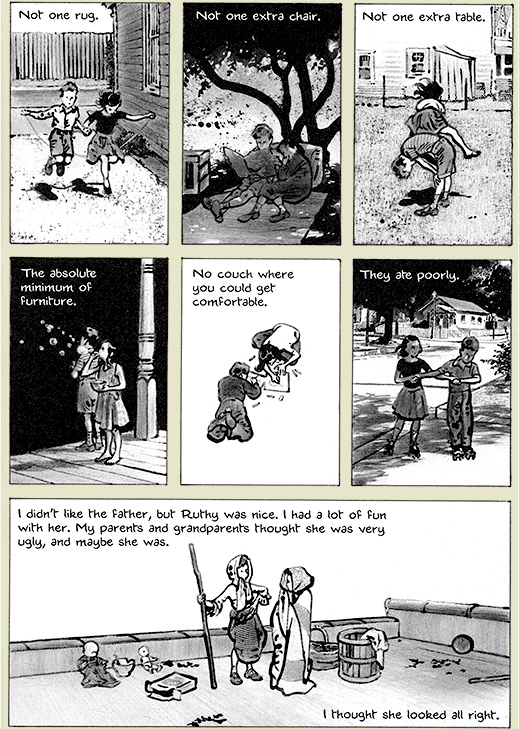 I thought so too.
I thought so too.
This one landed late enough in 2013 that I'm counting it for the 2014 list. Much in line with Okazaki's later work Helter Skelter, Pink takes a bit more comedic look at social requirements placed on women in late-twentieth-century Japan. But because certain things are too much universal, the book remains relevant to present readers in the US.
Fatale is like the perfect squeeze-blend of noir thriller and Lovecraftian bizarro-ness. It's tense and gripping and beautifully illustrated. It won't change your heart or mind on any single issue, but it cuts a damn fine yarn.
I didn't catch Monster the first time it came around (none of us are made of money, right?), so I've been picking up these Viz perfect collections as they come out. I hear lukewarm things about the book's finale, but that's still two years away at this point. At present, Urusawa is wholly in control of a tremendous work of sinister anxiety and I'm loving it.
I don't know if this ended or not. Viz is not super communicative. The different looking cover leads one to believe volume 10 was the finale. What occurs in the book could make for a conclusion, even if a bit of an awkward one. That said, the scope of Yoshinaga historical revisionism of the Japan Shogunate era is incredible. I have so much fun every time I sit down to read these. (I read them always with one thumb keeping my place in Wikipedia so I can look up the "official" version of events.) I can't imagine someone attempting this with US history and succeeding even half so well as Yoshinaga does.
One of the big surprises for me was this mini by Christopher M. Jones and Carrie Pietsch, about a dog father mourning the loss of one of his sons and wondering at the apparent ambivalence of their owners. It's a solid story—great, really—and it shows off both creators' talents well. Visually and tonally, it's different from anything else I've seen from Pietsch. Also, it broke my heart.
Oh Joy Sex Toy masquerades as personal reviews of a variety of sexual apparatuses (and sometimes features informational bits on alternative sexual cultures). I mean, "masquerade" is a bit off because Erica and Matthew honestly do perform the expected reviews. But really, what makes OJST shine for even tourists such as myself is its ability to portray the human being as a creature widely varied both inside and out. Moen features characters whose physical difference mirrors their breadth of tastes. Moen's off-the-cuff and clinical (it's a mix, really) exploration of sexual practice and nature really just highlights how different we all are and underscores how deeply we require some sense of mutual understanding in order to begin the work of interacting in healthy ways.
Emily Carroll is comics' crown prince of horror. I mean, if she were male. And if comics were a monarchy. And if her dad was the king of comics horror. Whatever the case, she's amazing at horror. I don't want to say she's better at it than Junji Ito, but she probably is. Hers is a more provincial kind of horror though. More mundane. The kind of stuff that would be the twisted dreams of a pre-industrial West. She's been putting out amazing horror comics for years on the internet, but someone finally had the good sense to publish her in handsome hardback.
Special note: Through the Woods contains "His Face All Red," one of my favourite of her works, which you can still read for free on the internet. Also I liked it enough to carve a pumpkin in tribute:
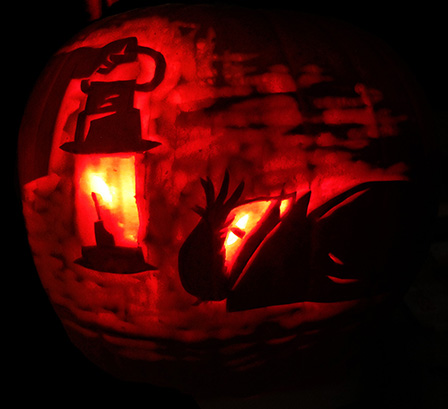
Even if I still disagree with Noelle Stevenson about who her main character is, Nimona is such a joy to read that it's difficult not to be charmed by its story and characters.
I appreciated my time in Eleanor Davis' worlds. She offers plenty of food for the hungry of thought—even if thought may ultimately be the root of our troubles. She invites readers into realms of nostalgia and of mystery and of existential terror. The portholes through which we can view these kingdoms of hope and pain are small and smudged, but we see enough. Enough to apprehend them, enough perhaps even to judge them. And certainly enough to enjoy the experience of their lessons.
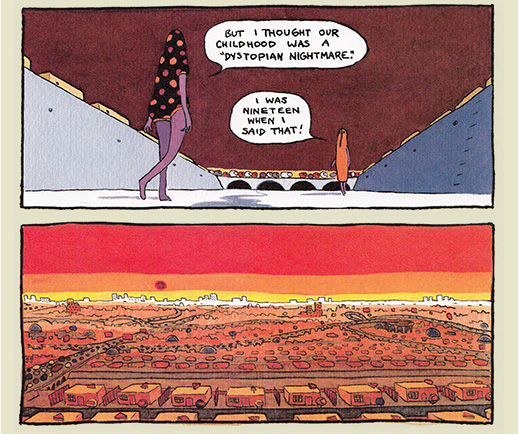
Yang and Liew do that kind of thing where they discover an old work and renovate it, bringing a classic character back from oblivion. And who knows whether these things are ever actually true or not. Paul Jenkins did something like it with Sentry, creating a character that supposedly didn't make it out of the golden age of comics, and Seth did something similar with It's a Good Life If You Don't Weaken, where he fabricated a lost cartoonist and then investigated his legacy. I don't know, maybe the Green Turtle was a legit character published in the '40s. Really though, it doesn't matter. The book is a lot of fun and reimagines reasons behind numerous weirdnesses that would have been common to portraying an Asian-American hero in the '40s. Yang continues to pull at the thread of the resident alien in our midst and hopefully eventually this whole thing will unravel and we can start to be awesome and civil and lovely to each other instead of abiding in our petty passive-aggressive racisms that we pretend are colour-blindness.
Boulet is that guy who did the webcomic in 2013 about riding in the back of his family's car as a kid. It was lightly animated with gifs. It was awesome. A while back, he released another one, about a villainous wizard who, in a final act of malice opened a portal that sucked in the wizard, the maiden, and the hero. It was a portal to... here. Where there is no magic, no monsters, no potions or spells or ways home. It is entirely engaging and I recommend you to it.
This one kind of came out of left field for me. Ignore the nutty name for just a second and let's talk about Crunchyroll. Crunchyroll, until this last year was an anime streaming site. A little while back, they legitimized and got contracts for simulcasting anime as it's released in Japan (or near enough to an actual simulcast to count). I would sign up for a month or two every year or so, just to watch a few cool shows and then I'd let my account lapse again. (It's kind of like playing World of Warcraft, which I play for two months every other year.) Whatever. This time when I signed up for a Crunchyroll account, they also included access to their new extension, Crunchyroll Manga.
Crunchyroll Manga is a service where if you have an account you can read anything from their collection of manga whenever. It's especially nice on a tablet. They have a glut of titles and some of them are pretty sweet. Some probably suck, I don't know, but some are just great. Like the above-mentioned A Silent Voice. So I loaded up on a bunch of different titles and started seeing what was what. I was reading A Silent Voice (obviously), Inside Mari (a new series by the guy who did Flowers of Evil), UQ Holder (the sequel to Negima), Spirit Circle, and a handful of others. I was liking Spirit Circle a lot, but the fact that only one chapter comes out per month was killing me. I've mentioned before that I'm not good with series. Then, a few months back, Crunchyroll introduced a new series by the creator of Spirit Circle called The Lucifer and Biscuit Hammer. Only this new series is an old series, which means all the chapters became available at once. Which means I had an awesome binge-y weekend.
The book is pretty wild (as one could gather by the title). I'm still not clear at all what the "Lucifer" portion of the title refers to (it doesn't even matter, I promise), but the Biscuit Hammer refers to the gigantic hammer that floats above the earth, waiting to destroy everything—a hammer that no one can see unless someone tells them that it is there. The series toys with manga conventions and tropes and is playful and adventurous and really just a ton of fun.
Years ago, I reviewed the first volume of Miss Don't Touch Me. There was a second volume but I'd never seen it and it had been out of print for ages. In 2014, perhaps to coincide with the successful, lauded releases of Kerascoët's Beautiful Darkness and Beauty, Comics Lit rereleased both volumes of Miss Don't Touch Me as a single edition. It's lovely and a perfect companion to Beauty. It's murder and mischief and harlotry hijinks in 1920s Paris.
Kaoru Mori just keeps on trucking, drawing the most meticulously illustrated comic about 19th century bridal arrangements. 2014's volume 6 returns the narrative to cradle-robbing-by-arrangement couple Amir (20 years old, female) and Karluk (12 years old, male) after two volumes following some precocious twins who were marrying precocious twins. This one is a rare action-heavy installation set in the larger panorama of the Russian military expansion in the Great Game era.
This large, newsprint production trades on lots of pinks and lavenders and yellows and oranges to essay a lovely paean to the city of Pittsburgh. It's chunky and raw and beautiful.
Wandering Son is another that continues truckin' along, with no torrential changes. Just good, solid stories about these nutty kids and all their explorations of sex and gender.
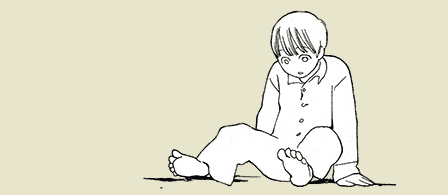
Bryan Lee O'Malley's follow-up to Scott Pilgrim couldn't have been anything other than hotly anticipated, so whatever expectations readers had for it couldn't have been fair in the least. The book is solid. It took me a second read to begin to take to it, but O'Malley does a good job portraying a creature of disfunction that you kind of sort of feel sorry for—and maybe you want things to work out for her. (But more you just want things to work out for those who fall in her path.) It's an interesting dynamic.
Powers is one of those series that's easy to forget about. Especially when there're long breaks between volumes. Back when Powers was pretty much what Bendis was doing, it took the forefront of the world's Bendis-attention (there's only so much Bendis-attention allotted to each year). Sure, there were still people that swore by Jinx or Goldfish, but Powers was where the fun and mayhem was. After all, he was doing the alt-perspective-on-superheroes schtick better than anyone at the time. Add to that some vaguely naturalistic dialogue and Powers felt like the kick in the groin that superhero comics needed.
Then he picked up some high profile jobs at Marvel. Headlining the Ultimate line with Ultimate Spider-Man, headlining the Max line with Alias, and doing wild stuff with Daredevil. Powers kept chugging along, never losing steam really, but always in the shadow of the stuff that had broader appeal. Then Bendis picked up more Marvel work and cracks became more visible. Avengers, X-Men, whatever else. The gold-to-dross ratio dipped and the Bendis brand tarnished enough so that now his name was barely associated with Powers at all. Instead, it was The Only Guy Writing Spider-Man vs the Guy Who Ruined Marvel Comics. The annual allotment of Bendis-attention got used up pretty quickly on those more trivial projects.
But Powers kept chugging along. Slowly but often surely. And, inexplicably, across several renumberings. Powers: The Bureau, the fifteenth collection of the Powers series is actually the start of the fourth Powers series. And it's good. Probably as good as it ever was. I still love it even if I forget to pick it up in anything resembling a timely manner.
I'm uncomfortable discussing how good Southern Bastards might be without first discussing how legit Jason Aaron's hyperbolic, probably ultra-offensive rendition of the South actually is. We see drawings of black people that are gross caricatures or misogynistic renderings of women in comics and we recognize them for what they are. In Southern Bastards Jason Aaron is capitalizing on the fact that the South is the last people group in the US that one can malign with impunity. Beyond the questionable nature of the portrayal, the book hums with a delicious crime vibe. It's violent and arrogant and perhaps it's only real narrative misstep is when Earl performs a very comicbooky monologue before his father's grave and then lightning splits a tree revealing a legendary weapon for Good. It was very corny and it's lucky the book had purchased its fair share of goodwill by that point. Well, also, that and the concept of a town that loves football so much that the highschool coach can commit murder in broad daylight and there is not even a whiff of a breeze of consequence for him. Maybe it's better to just chalk up Aaron's South into the realm of full-blown faery tale, and enjoy it on its own terms rather than as any sort of reflection on any actual part of the American society..
I'm not specially interested in mecha, but Knights of Sidonia, with its focus on the relationships between its characters and the enjoyable soft-use of hard sci-fi concepts, remains one of my favourite on-going series. It moves between epic spectacle and post-contemporary oblivious harem.
I'd been familiar with Kate Beaton from her Hark A Vagrant! collection a couple years back and her every-so-often comics about her family (which are just about the best thing ever). In Spring of 2014, Beaton tested a bit of longer-form autobio strips about her time working onsite for a mining company in Canada. It's sad and funny and poignant and altogether human.
After her toe-dip into the world of making comics, A Redtail's Dream (a 600+ page toe-dip!), Sundberg embarked on a new project: the postapocalyptic Stand Still Stay Silent. Her command over her art and colour is growing by bounds and the visual confidence in the work is reassuring. The series is a bit over 250 pages in and has a substantial amount 'til completion, so we'll see where it goes.
A strange tale about Orson Welles, Rita Hayworth, an all-star cigar roller, and a sailor with a penchant for carving nutty pipes. Nick Abadzis does some amazing stuff with the art, such as with this homage to a similar dream sequence in Laika.
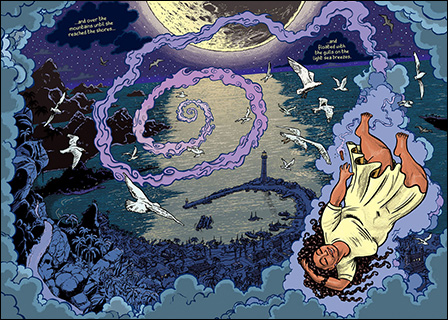
Brutally violent and far more intriguing than I'd imagined. I can't wait to see where this book (in which no character is safe) will take its final breath.
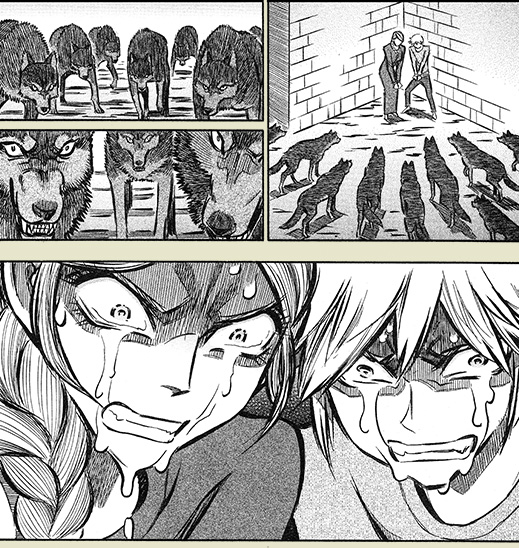 Fact: what you expect to happen in the next panel does indeed happen.
Fact: what you expect to happen in the next panel does indeed happen.
Last year I wrote: "Kuji has put together a brutal, sentimental action-film spectacular. In all honesty, I probably would have preferred the more true-to-canon version of things, but not only do I respect Kuji's choice, I also have come to pretty thoroughly enjoy it. It's not by any stretch a perfect work, but especially for one's first headlining project, she shows an able commitment to her vision. I look forward to seeing how she directs the narrative going forward and my fingers are crossed that she'll at least spare one or two of the personalities in the book I've come to enjoy."
I was of course being perfectly naive and have since paid for that blind optimism.
I'm constantly and happily surprised by Brandon Graham's adaptation of a terrible character and series. This is a tremendous effort, though 2014's volume seemed more a mustering of the chessmen before the big war.
Caitlin Cass continues to produce amusing excursions into the history of Western society. In 2014, she focused mainly on a couple American cities and the insanities that forged the cradle of Mid-Western civilization.
You can subscribe to be a member of the Postal Constituent from Cass' website.
After Bendis brought the original Ultimate Spider-Man to a diminished close (a conclusion hampered by Marvel's self-immolating need to do crossover events), I skipped out on his revamp for a while. At last, I picked up the adventures of Miles Morales. And despite Marvel's inability to keep a title on the book (from Ultimate Spider-Man to Ultimate Comics Spider-Man to Miles Morales: Ultimate Spider-Man), the adventures of Miles Morales may actually be more engaging than Bendis' earlier work with Peter Parker.
Fables continues to steam along toward what is looking increasingly like a dour, tragic, cataclysmic ending. Volume 20 was a bit like getting chess pieces in place, but the series remains strong and entirely worthwhile.
I hated Archie as a kid. Even in 1985, Archie and his gang felt a hopelessly outdated relic of the past. But here they come alive and then unalive in a fresh and vicious way. This is to Archie what Brandon Graham's Prophet is to Prophet, only juggling way more luggage.
Completely unexpected. Completely fun. Completely clever. It's like my first time reading the first half of Death Note all over again.
A completely solid little biographical account of Shackleton's Endurance expedition. Exciting, engaging, and thrilling to see the wonder of human struggle play itself out in such overly civilized ways.
A well-composed biographical sketch of Andre the Giant that will be of special interest to fans. Still of interest for non-fans, just less so.
A completely interesting world glancing with somewhat interesting character and fraught with uninteresting and sometimes quite stilted writing. (I almost gave up on chapter 1 and would have, had the book not been so highly recommended to me.)
Seeing these two characters' reincarnated lives cross paths over and over again is a lot of fun, and as it feels like it's more than halfway to the finish, I'll be glad to see what roads this finally takes.
Josh Tierney continues to play scribe to a revolving door of artists. Only "revolving door" in this case is good and intended. Spera doesn't have an artist, it has artists. Tons of them. One per chapter, basically, and then a handful for each volume's supplementary stories. With the first three vols, Tierney seems to have laid out for the reader a sense of what the kingdom of Spera is like. With the daunting title, Ascension of the Starless, Volume 1, it seems as if things have begun in earnest and that it's about to get serious.
I love Lemire's art and I love that he wanted to try something wild. I did not love at all the disorientation of having to flip the book this way and that to follow the story. It removed me too far from the space of the actual narrative and had me hyper-aware of my place as the reader. I was left disengaged in the plight of the two protagonists.
By this point, the reason to read Blacksad remains clear. It's the art, which is so incredible that your mind will boggle. The writing works but has little special about it save for that luscious privilege of seeing your own culture from the eyes of an outsider. Which cliches will survive, which will govern? It's part of the reason I love Eagle: The Making of an Asian-American President so very much.
This felt like Michael Deforge tightened himself up, picked an aesthetic direction, steeped himself in it, and then went to town on a wacky narrative thread. The art reminds me of the stuff my druggie kid friends were up to when I was in school, a bit of psychedelia, only reined in and composed. It's well done but less to my taste than seventy-two other books this year. If there's one thing that I really do absolutely adore about this, it's how packed full this "jungle" is. Panels are bursting with flora and are tickled with fauna. The colours are top-notch and everything feels so expertly packaged.
Lily Chen was hard for me. I loved the story and the art can be luscious and delectable (my dad flipped through some pages and would frequently stop and exclaim over their beauty). But the characters feel awkwardly composed, like they don't belong in the story (basically the opposite problem of Saga. I found them repulsive to look at and their grotesqueries too far removed me from the book, so that while I admit to thinking the book pretty swell, I can't get behind it like I would like to.
As always, Asano's visuals hum. As an illustrator and visual visionary, he sits among the top of the game. What Nijigahara perhaps lacked (or at least lacked for me as a reader) was that bit of heart that could more deeply invest readers in the twisting, turning plight of his characters.
A Couple Closing Notes
Saga
This is a big title that has been conspicuously absent from past editions of my annual list. Every year I get the question, What? No Saga? In the past, it's been easy to rely on the fact that I hadn't read it yet. I tend not to get into on-going series simply because I don't enjoy the tension between releases. I don't tend to follow on-going television series for the same reason.
But this year, I did read Saga, vols 1 through 3. So what's the deal, man? Why no Saga?
In an earlier edition of this list, one penned around early December, Saga had made the list. It was low on the list at 69, but at least it was there. So what happened was, I read other, better books. A lot of them. Saga's fine, I guess, but there were a lot of better books that came down the pike. Probably a lot of better books that I haven't even read yet, too. And that's the great thing about these lists: No matter how much you love Saga (or whatever else I didn't include), just look at all the other amazing books you can be enjoying. We're really living in a wonderful time for comics.
So, what do I think of Saga?
I think Brian K. Vaughan has created some wonderfully inventive characters. I, like most everybody, adore Lying Cat. I think Vaughan's story is engaging enough that I really would like to know what happens at the end. I think Vaughan's writing on this project is... not great. I think his use of hip lingos and jargons will age the work incredibly fast. What seems like cool-guy repartee now will read very differently in a decade. Like if a Marvel writer in 1982 had some cool punker kid that you were supposed to get behind saying stuff like "Groovy!" and "Far out, man!" Also, Hazel's narration is always a chore. The series probably would have been so much better without it.
I think Fiona Staples is a masterful illustration talent, and it shows in her figure-work. I love what she draws, all these crazy characters. She's perfect for it and the series is yards better for her involvement. Only... as good as her figures are, her backgrounds are just straight up the opposite. They are, like, the worst you guys. They drive me nutty—that such a talent would be reduced in that way. I'm guessing it's to speed up the art process to get issues out on time maybe, but man, I would gladly wait longer for release. Or maybe hire on an assistant for backgrounds.
But yeah, that's why Saga isn't cracking the upper echelons of my quantified tastes. It's fine if it's your jam. I love that about us. That you can have your thing and I can have mine and that maybe some of the above comics is where our tastes intersect and we can high-five each other and say "Groovy" like we mean it.
Archaia Why You So Cruel?
Alright, so 2014 was the year a certain comic I enjoyed was obliterated. City in the Desert by Moro Rogers was a nice little book that Archaia divided into thirds to market as a trilogy. The first volume came out to some commendation, but it was obviously incomplete and felt awkwardly ended (which it was since it wasn't intended to be broken in thirds, a lesson I hear Peter Jackson ought to have heeded). I held off on reviewing it because I wanted to get a better picture of what was going on in the story.
Volume 2 was due out in early 2014, so I preordered it with Amazon. Day of release comes, I see a couple notes on Twitter, people with copies. Nothing from Amazon. They have no copies and have no idea what's up. I check my local comics store. They have volume 1 but no volume 2. They can't even order it. I sigh, head over to Barnes & Noble and try there. Nothing. It's not even in their system. I contact Archaia and ask what's up and it's all just, "Uh, hm. Well, we'll have to look into that." Six weeks later, Amazon sends me volume 2.
It's good, but it's also clear that Archaia will be abandoning the series. The question is: Why bother printing the second volume at all if you weren't going to support it with marketing and actually getting it into stores or into the hands of interested reviewers? On top of that, I feel cheated. Like that Archaia never had confidence that they'd actually finish the series but they still decided to sell me the middle chapter anyway.
That was probably my biggest disappointment in Comics 2014.
Special Thanks
A good handful of books that ended up on this list I wouldn't even have been aware of had it not been for two fellow critics, Greg Burgas and Zainab Akhtar. Thanks guys, you make life taste better.
Good Ok Bad features reviews of comics, graphic novels, manga, et cetera using a rare and auspicious three-star rating system. Point systems are notoriously fiddly, so here it's been pared down to three simple possibilities:
3 Stars = Good
2 Stars = Ok
1 Star = Bad
I am Seth T. Hahne and these are my reviews.
Browse Reviews By
Other Features
- Best Books of the Year:
- Top 50 of 2024
- Top 50 of 2023
- Top 100 of 2020-22
- Top 75 of 2019
- Top 50 of 2018
- Top 75 of 2017
- Top 75 of 2016
- Top 75 of 2015
- Top 75 of 2014
- Top 35 of 2013
- Top 25 of 2012
- Top 10 of 2011
- Popular Sections:
- All-Time Top 500
- All the Boardgames I've Played
- All the Anime Series I've Seen
- All the Animated Films I've Seen
- Top 75 by Female Creators
- Kids Recommendations
- What I Read: A Reading Log
- Other Features:
- Bookclub Study Guides
